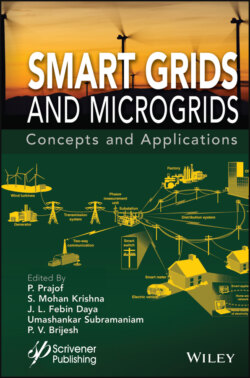Читать книгу Smart Grids and Micro-Grids - Umashankar Subramaniam - Страница 10
Оглавление
Preface
As the world is getting smarter and smarter, the advancements in digital and information technology are paving the way for advancement in the way electricity is managed and controlled, leading to a more resilient, responsive, and efficient power system known as the smart grid. Making the grid smarter is made possible by adding a layer of technologies, including data-producing sensors, advanced data analytics and smart meters that give energy managers the greater clarity and comprehension they need to make the power system optimally efficient.
The major benefit of the intelligent grid is its ability to let energy providers fine-tune exactly where and when power is needed, and on consumers, it reduces energy consumption and saves money. In the future, it is expected that there will be minimum energy loss, no blackouts and no unexpected spikes in demand due to smart grid. The smart grid in near future will also embrace energy sources that will reduce the amount of greenhouse gases entering into the atmosphere.
Microgrids, on the other hand let customers put sources of energy generation, storage and control on their sites and in their communities to meet between 80 and 100 percent of their average power needs. Microgrids give communities, businesses and public institutions greater energy resilience, reliability, security, and choice about the amount of renewable energy they want to incorporate into their power systems.
The research and development of smart grids and microgrids in the last decades is the way how some countries have modernized their transmission and distribution networks in order to respond to the challenges and problems that the grid has to face, such as the increasing demand or the higher penetration levels of renewable energy resources while keeping high-quality standards in an efficient, reliable, safe, economical and robust manner. The need for gathering information from suppliers and consumers is critical to determine the state of the grid and to optimize the operation and management of the system regarding load shedding, storage administration, and strategies to face faults and grid contingencies.
In this book, we strive to include a rich range of recent developments in smart grids and microgrids. We assume that the book would be a valuable tool for a wide audience, including researchers on smart-grids and microgrids. The major topic covered includes the role of renewable energy sources and storage units in microgrids and smart grids, control and stability analysis of microgrids, the impact of electric vehicles in microgrids and smart grids, role of telecommunication technologies in microgrids and smart grids, IoT, machine learning and artificial intelligence for smart grids and environmental and techno-economic aspects of microgrids and smart grids.
